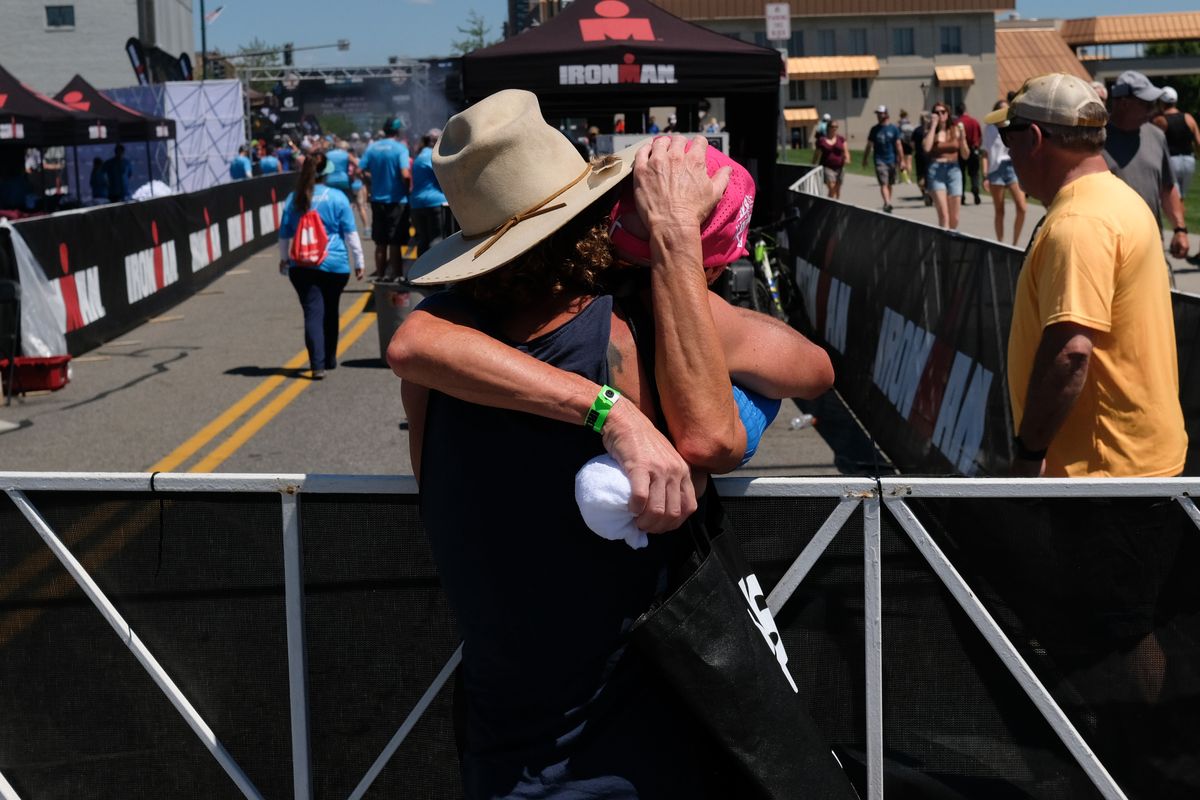Beating the heat: Ironman competitors tough it out despite 100-degree day

Sherman Avenue looked lopsided Sunday afternoon along the finish line.
One side of the street near the end of the Ironman Coeur d’Alene course was virtually empty, baking in the sun.
The other side, blessed with a shady sidewalk, was crowded. Spectators licking ice cream cones and clutching frosty beers didn’t seem to have any problem with the 100-degree heat as they watched exhausted competitors near the end of the 142.6-mile race.
A full Ironman race is a 2.4-mile swim, a 112-mile bike ride and a 26.2-mile marathon .
Ironman David Ciaverella of Portland said the heat didn’t bother him much. He said racing in 100 degrees doesn’t feel any worse than running when it’s 90 degrees out.
But he didn’t want his wife to come watch in the blistering heat.
“It’s far more difficult to spectate these,” Ciaverella said.
He wasn’t kidding. Contestants and race volunteers said one of the main differences between Sunday’s race and a typical Coeur d’Alene Ironman was the smaller crowd sizes. The heat appeared to keep people home or push them to Lake Coeur d’Alene’s beaches, Ironman veterans said.
Volunteer Bob Pitcher, who prevented runners from going the wrong way at a turn, said contestants appeared to be handling the heat well as of 4 p.m.
“I’ve seen a couple of them that gave out or quit, but most of them have hung in there,” Pitcher said.
Jason Vest, a water station volunteer, said the heat appeared to slow people down somewhat, and a few more people were walking the race than normal.
Competitors were drinking more water, too. Vest spent his afternoon dunking his arms into a big blue ice bucket full of bottled water and pulling out bottles to hand off to runners again.
“Get your ice-cold water,” he shouted over and over as runners came by, sounding exactly like a ballpark vendor.
Vest’s salesmanship brought some smiles, but it couldn’t have been more unnecessary during the Ironman. Virtually everyone who ran by accepted a bottle.
Vest, sopping wet from reaching into the ice bucket over and over, worked in more individualized shouts when he could, complimenting a man with a jury-rigged sunhat and admiring a runner for having bib number 444.
“Hey, Snapple,” he hollered at a man sponsored by the beverage company, “have some water, it’s better for ya.”
Ciaverella said the key to doing an Ironman in a heat wave is hardcore hydration. The longtime competitor said he prehydrated for a week before the race, eating heaps of watermelon, grapefruit, pineapple and bananas.
Competitors and spectators said the heat probably had less of an impact on the faster racers like Ciaverella.
“The people that are doing it in 11 hours and under, it’s not really affecting them that much,” said Mike Veenstra, who came from Iowa to watch his son Jesse Veenstra race.
Slower competitors who had to spend more time out in the sun might have fared worse. As of press time it was unclear if the race’s medical tent was busier than it would be in a typical year, but medical staff were busy dealing with competitors.
Eric Harr ran the race in 9 hours, 39 minutes, qualifying for the Ironman World Championships in Kona, Hawaii.
Harr was pleased with that time, but he wasn’t as nonchalant about the heat as Ciaverella.
“It was really oppressive,” the Bay Area man said. “It just gets sort of worse and worse.”
Harr, who was a professional triathlete during his 20s and has written books on the sport, said the Coeur d’Alene race was special.
“I’ve never experienced heat and hospitality like this,” he said. “It brings tears to my eyes because they were so supportive out there.”
Even though the crowds were smaller, Harr appreciated the number of people who came out to cheer and ring cowbells.
“I needed it that last 15 miles,” he said.